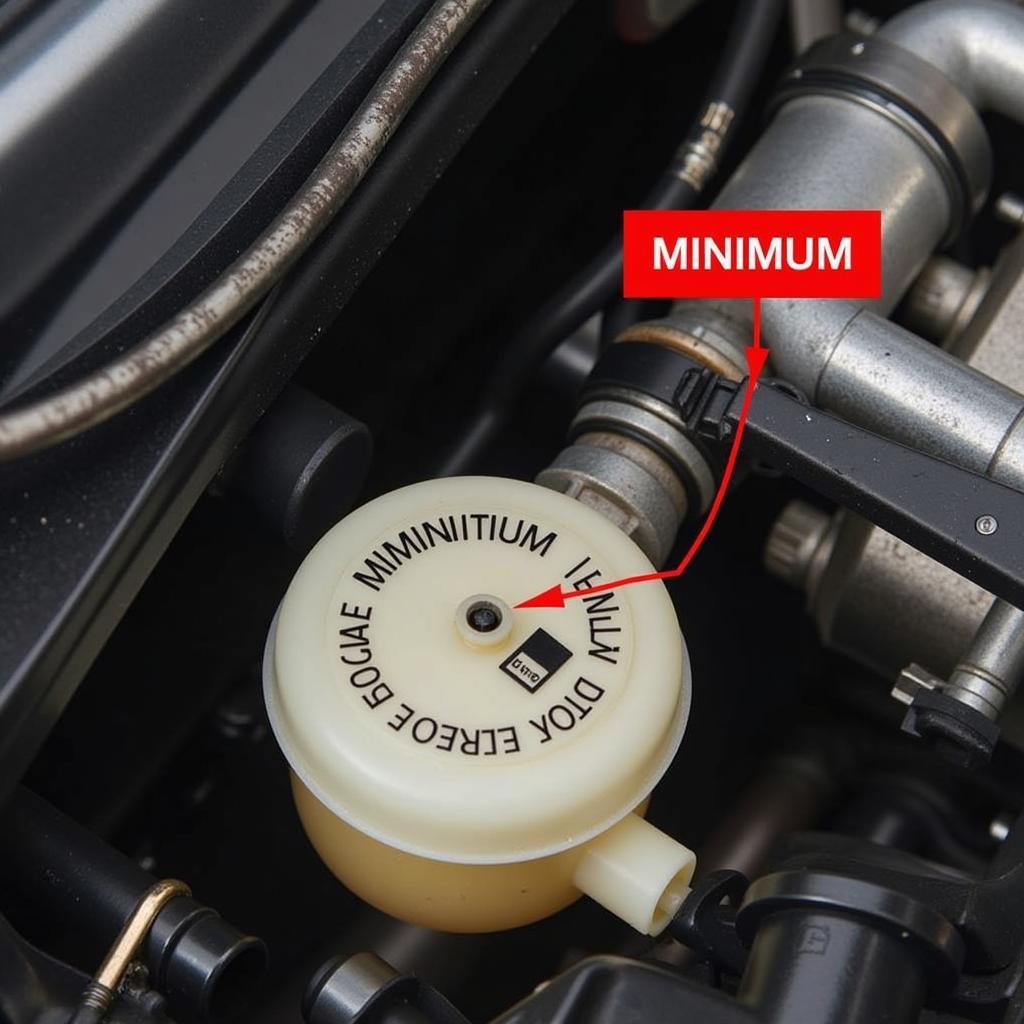The dreaded brake pad warning message illuminated on your Mercedes GLK 250’s dashboard. This message can trigger a wave of questions and concerns for any driver. Understanding the message and its implications is crucial for your safety and the longevity of your vehicle. This comprehensive guide will delve into the intricacies of the Mercedes GLK 250 brake pad warning message, equipping you with the knowledge to address this common issue.
Deciphering the Warning Message
The brake pad warning message on your GLK 250 typically appears as a yellow or red illuminated symbol on your dashboard. This symbol often resembles a circle surrounded by parentheses with lines extending from either side, signifying worn brake pads. When this light appears, it’s your car’s way of saying it’s time to pay attention to your braking system.
What Triggers the Brake Pad Warning Message?
The most common culprit behind this warning message is worn brake pads. Your GLK 250 is engineered with a brake pad wear sensor, a small piece of metal embedded within the brake pad material. As you brake, the pads wear down, and when they reach a certain level of wear, the sensor comes into contact with the brake rotor. This contact completes a circuit, triggering the warning message on your dashboard.
Ignoring the Warning: The Risks
Ignoring the brake pad warning message can lead to several serious consequences:
- Reduced Braking Performance: Worn brake pads compromise your vehicle’s ability to stop efficiently, increasing your stopping distance and the risk of an accident.
- Damage to Brake Rotors: Driving with severely worn brake pads can cause the metal backing plate of the pad to scrape against the brake rotor, leading to costly rotor damage.
- Expensive Repairs: Delaying brake pad replacement can result in more extensive and expensive repairs down the line, including rotor replacement or caliper damage.
What to Do When the Warning Appears
If the brake pad warning message illuminates, it’s crucial to:
- Assess Your Driving: Have you noticed any changes in your braking performance, such as squeaking, grinding, or vibrations when applying the brakes?
- Check Your Mileage: If you haven’t replaced your brake pads recently, they might be due for a change. Mercedes-Benz recommends inspecting brake pads every 10,000 miles and replacing them as needed.
- Consult a Professional: Schedule an appointment with a qualified mechanic specializing in Mercedes-Benz vehicles. They can diagnose the issue, confirm if it’s indeed worn brake pads, and perform the necessary replacements.
Remote Diagnostics and Software Solutions: The Future of Automotive Repair
Advancements in automotive technology now allow for remote diagnostics and software solutions for certain car issues. While a brake pad replacement requires physical intervention, remote diagnostics can be useful for identifying the root cause of the warning message, especially if other underlying issues exist.
“Remote diagnostics can be incredibly helpful in pinpointing the exact cause of a warning light, like the brake pad warning. It can differentiate between a faulty sensor and actual pad wear, saving time and potentially unnecessary repairs,” says John Miller, a senior automotive technician at a specialized Mercedes-Benz repair shop.
Conclusion
The brake pad warning message on your Mercedes GLK 250 should never be ignored. Addressing this warning promptly ensures your safety and prevents costly repairs in the long run. By understanding the message, its causes, and the importance of timely action, you can confidently maintain your vehicle’s braking system and enjoy a safe and smooth driving experience.

